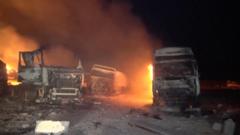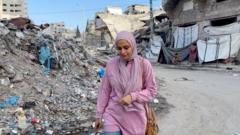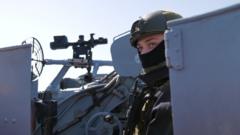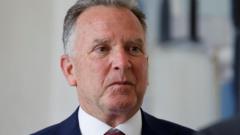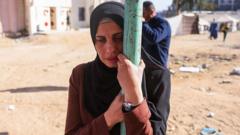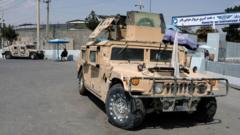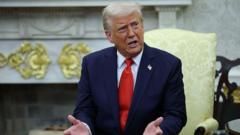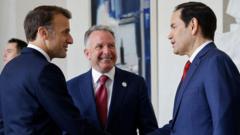With the backdrop of military threats and mixed messaging, Iran and the US are gearing up for their second round of nuclear talks in Rome. While both sides have expressed cautious optimism following their previous discussions, the path to a deal appears fraught with complications—including Iran's insistence on its right to enrich uranium and the volatility introduced by regional players.
Rising Tensions and Unclear Paths Ahead as Iran-Nuclear Talks Loom

Rising Tensions and Unclear Paths Ahead as Iran-Nuclear Talks Loom
As Iran and the US prepare for another round of nuclear negotiations, escalating military threats and contradictory signals raise concerns about the potential for a diplomatic breakthrough.
As the United States and Iran approach a crucial second round of nuclear talks scheduled in Rome, pre-existing tensions have intensified, casting doubts on the reachability of an agreement. President Donald Trump has underscored the stakes by frequently issuing stark warnings to Tehran, emphasizing the choices before it: accept a deal or face war. Reports have emerged suggesting Trump dismissed an Israeli plan for a military strike against Iranian nuclear facilities, yet tempered his statements by indicating a desire for diplomatic avenues to be explored.
The initial discussions in Oman last weekend were termed constructive by both negotiators, prompting Trump to signal that a swift decision regarding Iran's future actions was forthcoming, further adding to the tension surrounding the negotiations. The US’s disengagement from the 2015 nuclear deal, which had previously mitigated Iran’s nuclear ambitions in exchange for sanctions relief, marks a significant turning point. Trump’s "maximum pressure" strategy, reinstated sanctions, and Iran's growing nuclear capabilities raise stakes even higher.
Iran has advanced its nuclear operations significantly despite ongoing tensions, asserting it possesses ample enriched uranium—enough potentially for multiple nuclear weapons. Nevertheless, Iran maintains that it has no intent of weaponizing its nuclear program, highlighting its commitment to returning to the negotiating table primarily due to America’s narrowed focus on nuclear discussions.
Intriguingly, both nations seem poised between a diplomatic breakthrough and the specter of armed conflict, with a muddle of varying U.S. official statements on Iran’s enrichment capabilities causing confusion. While Trump’s Special Envoy, Steve Witkoff, continues to push for a comprehensive agreement aimed at Middle Eastern stability, the Iranian delegation remains steadfast that enrichment is an inviolable right.
Intensifying diplomatic exchanges extend beyond Tehran and Washington, with Saudi Arabia's defense minister recently delivering a message from King Salman to Iran’s leadership, suggesting a complex regional dynamic. Meanwhile, Iran's foreign minister has engaged with Russian counterparts, strengthening military ties even as the region braces for potential fallout from any negotiations that falter.
Amid this multifaceted diplomatic landscape, the prospect of mutual distrust remains omnipresent. Supreme Leader Ayatollah Ali Khamenei's skepticism toward negotiations with Trump’s administration looms over the discussions, heightening the stakes. As parties involved in the negotiations attempt to project optimism, the underlying currents of discontent within Iran and military threats complicate the road to peace.
As the world watches closely, this impending round of talks in Rome could determine not just Iran's nuclear future, but the broader stability of the Middle East itself.


